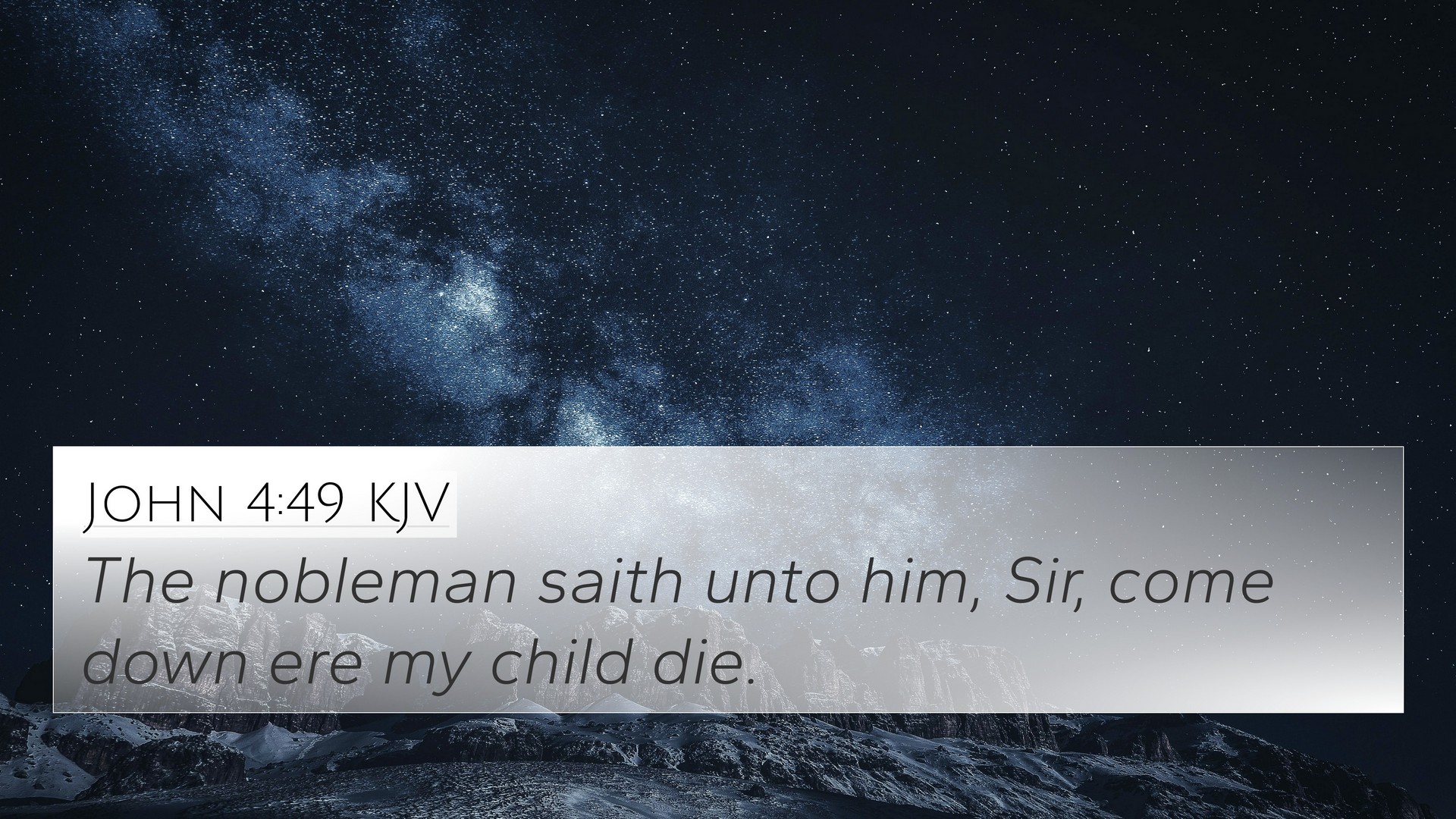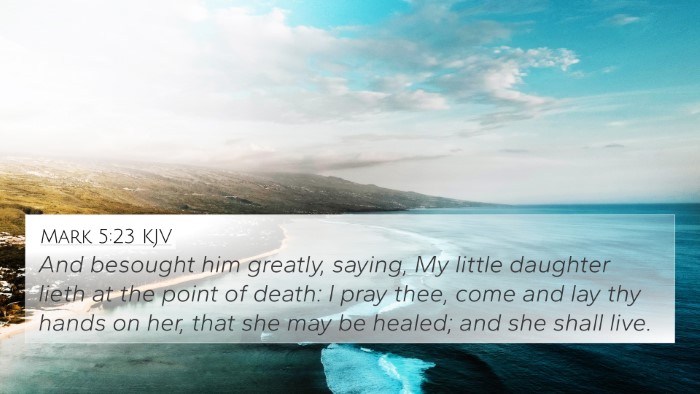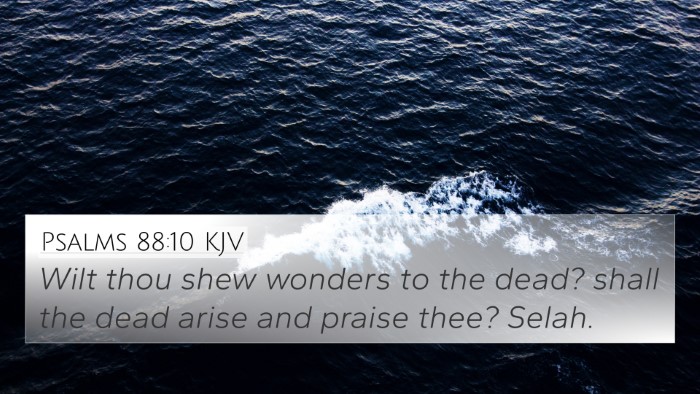Understanding John 4:49
John 4:49 states: "The nobleman saith unto him, Sir, come down ere my child die." This verse captures a tense moment as a nobleman, desperate for his ailing son, beseeches Jesus for intervention. Below, we explore its meaning through insights drawn from esteemed public domain commentaries, providing comprehensive interpretations and thematic connections.
Analysis and Interpretation
The plea of the nobleman can be viewed as a profound expression of faith mingled with desperation. Here are some key points about this verse:
- Desperation in Faith: The nobleman represents individuals who, amid desperate circumstances, turn to Christ for hope. His cry signifies reliance on Jesus’ healing power (Matthew Henry).
- The Authority of Christ: The nobleman’s approach indicates his recognition of Jesus’ authority—even in matters of life and death; he acknowledges that if Jesus would come, his son would be saved (Albert Barnes).
- Physical Distance and Spiritual Proximity: This encounter illustrates that distance is no barrier to God’s power. Jesus’ ability to heal from afar reflects the omnipotence of Christ (Adam Clarke).
Broader Biblical Context
Understanding John 4:49 also requires considering the broader narrative of the Gospel of John. The passage reveals themes of faith, healing, and the nature of true belief. The nobleman’s faith bridges the gap between skepticism and belief, illustrating a turning point in understanding Jesus’ mission.
Cross-References
This verse connects with several others, enriching its meaning through cross-referencing:
- Matthew 8:5-13: The story of the Centurion servant who believed in Jesus’ authority to heal from a distance.
- John 11:21-26: Martha’s dialogue with Jesus before Lazarus’s resurrection emphasizes belief in Jesus’ power over death.
- Mark 5:22-24: The story of Jairus, a synagogue leader pleading for his daughter, demonstrates similar desperation and faith.
- Psalm 30:2: A reflection of God’s power to heal and deliver, resonating with the nobleman’s plea.
- Isaiah 53:5: The prophecy of healing through the Messiah, connecting back to Jesus’ miraculous works.
- John 14:13-14: Jesus’ assurance that whatever we ask in His name, He will do, correlates with the nobleman’s request.
- James 5:14-15: The instruction on prayer for the sick highlights the importance of faith in healing.
Thematic Connections
Thematically, John 4:49 reflects the intersection of faith, urgency, and divine intervention. It invites believers to consider how they respond in life-and-death situations:
- Faith's Role in Healing: The relationship between faith and healing surfaces throughout Scripture, emphasizing that belief is foundational to experiencing God’s intervention.
- The Nature of Jesus’ Ministry: This verse ties into the broader narrative of Jesus as a healer and miracle worker, illustrating His compassion towards those in distress.
- Intercessory Prayer: The nobleman’s plea serves as a model for intercessory prayer, where one brings the needs of others before Christ.
Practical Applications
For contemporary believers, this verse serves multiple applications:
- Encouragement in Crisis: Just as the nobleman sought Jesus in his time of need, believers are encouraged to turn to God in their moments of desperation.
- Faith Over Fear: The nobleman’s faith can inspire believers to trust in God’s plan amidst adversity.
- Understanding God’s Timing: This verse invites reflection on the nature of divine timing in relation to our requests and needs.
Conclusion
In John 4:49, we observe a profound interaction that embodies the themes of desperation, faith, and divine healing. By cross-referencing this verse with others, the depth of its message is amplified, showcasing the interconnectedness of Scripture. The nobleman’s plea serves as a timeless reminder of the efficacy of faith, particularly in the face of life's most challenging moments.






